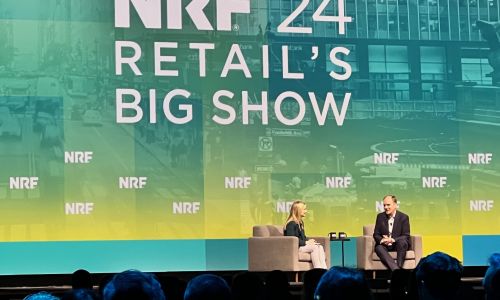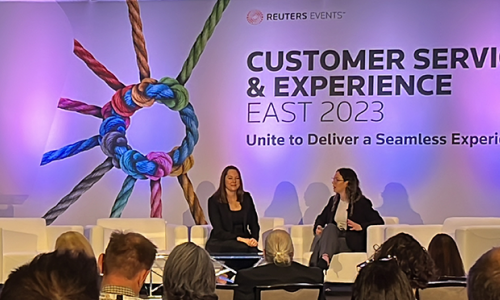KBC Bank is one of the top banks in Belgium and Central Europe, focusing on retail customers and small and medium-size enterprises. Even with its market-leading position, the company wasn't content. It wanted to build sustainable, profitable, long-term relationships with his customers. KBC is sure it will reach that goal by building on the value of its customer base. Here, KBC Belgium General Manager Rudi Peeters explains how the company has weathered economic uncertainty with its unwavering commitment to its customer strategy.
Customer Strategist: How is the customer landscape changing within the banking industry?
Rudi Peeters: Customers are more critical, less loyal, and more informed. Therefore, you need a client-centric strategy and approach more than ever. That's the only answer. A product or price approach is not enough anymore to get loyal customers and long-term relationships. Everyone, not only in the banking industry, is aware that being client-centric is the way to go to get more efficient, more profitable, and more loyal customers.
That propelled KBC's decision to be more customer-focused. We don't want to be a bank competing on price; we want to have a long-term relationship with our customers. The only way to do it is to have a client-centric approach.
CS: What is KBC's customer vision?
RP: I want to see KBC within the next three years as the premiere community bank/insurance in Belgium. We want to position ourselves as community bankers/insurers and the closest to the customer for all banks/insurance in Belgium, with a high-density network and specialized employees focused on their functions.
CS: What customer-focused initiatives have you put in place to achieve that vision?
RP: We started in 2006 because we saw that customer satisfaction, loyalty, and retention were all important issues. At that time we were more focusing on ourselves, our profitability, and our growth than we were focusing on our customers. In 2006 we started by creating a department called Client Focus. We appointed a general manager in charge of client focus and we installed that organization next to the marketing department, which at that time was a very good approach because marketing was focusing more on profitability for the group than on long-term relationships with the customers.
In the beginning we started small. We fixed [broken processes], paid more attention to complaints, and these sorts of things, until we came to the conclusion that our segmentation strategy should be changed. We involved Peppers & Rogers Group to help us to do that.
The most important result of that client-centric approach is that we finalized a plan for an end-to-end customer-centric strategy. That's not only segmentation, it's the distribution model, the remuneration model, it's target setting, and everything around it. So we launched a huge program in 2008, where we tried to cover all client-central issues, end-to-end, in one program.
It's an ongoing program that will take a few years. We will start implementation of the program at the branch level by the end of 2011.
CS: How will the new program affect your customers?
RP: My hope is that they will feel its benefits. Also, I believe that trust is not something that you communicate about. It's something you have to earn, something you have to deserve, and something you have to do. Then customers will communicate about it. That's more or less the approach we're going for.
CS: What does the program roadmap look like?
RP: We made the choice to create customer centricity with a high-density network. We've studied a lot at headquarters: We've done intensive cost-benefit analysis; we've done a strategic analysis of all the alternatives we can choose. Then we [put a great deal of] effort into getting everyone within
management on board and moving in the same direction. That was the first phase, which is already done.
Now we are in the phase where we roll the program down to the branch managers in the network. The next step will be to roll it out to all employees in the branches. The goals are to figure out what branches will be which kind of branches, and what will each employee's role be in the branch. It's quite a huge communication program, change management program, and implementation program.
We make it very clear that we start from the customer's point of view. We start analyzing from the client, then to the branches, then to the regions, then to headquarters, then to management. If the branches should be organized in one way, headquarters should also be organized to match. We have reorganized and diminished the number of managers here. For implementation, we started at the top with our management.
CS: How will the branches operate differently with the new program?
RP: Let's look at mortgages as an example. Mortgages were a product that everyone in the branch sold because it's a core product for the bank. But over time mortgages have become more specialized. You can either compete on price, where it becomes a commodity, or provide short- and long-term advice around the product. That advice business is one you need specialists for.
So it's not possible anymore for all bank employees to sell mortgages efficiently and [with the expertise needed to provide advice]. We decided that an employee needs to sell a certain amount of mortgages per month to maintain that specialty, to get training and performance incentives. They will be the mortgage specialists.
Some people are happy because they were working at the counter and they didn't want to sell this complex product anymore, and some people are happy because they don't have to work at the counter anymore and can instead specialize in mortgages.
It will be hard for some people to accept that not everyone will sell such a core product. This is one of the big changes we will do in our next steps. We have done some pilots to prove that it works. We have proven that we destroy value if we have someone who is not a specialist sell a mortgage. If we have a mortgage specialist we can create value, and this has also been proven in the pilots. Sales increase as customer satisfaction increases.
CS: How does customer experience fit into your customer-centric, end-to-end program?
RP: One thing that we started with the client-focus journey is to make "customer journeys." If a customer wants to have a mortgage, we ask the customer, "How do you come to the decision of which bank you choose and which kind of mortgage?" And then we will follow them and we let them write down the journey. For example, "I go to the Internet, I ask for this advice from people, I go to three banks," etc. These kinds of steps allow us to learn the process of a customer and how he comes to his decision.
If we find out a very efficient process based on the experience of customers, we try to organize our process around that process, instead of vice versa. At first, mostly we organized our processes based on the most profitable and efficient way to handle our products. Now we are doing the opposite. We let the customer define the journey.
For example, on the website we do click analysis and if we see a lot of customers stop after three clicks, we say, "OK, maybe there's something wrong and we have to reroute the clicks or add other links," then perform another analysis. Each time, we try to learn from how the customer is interacting with us to change our processes.
CS: What benefits have you seen so far from your customer focus?
RP: One of the most interesting results is that in the middle of the financial crisis—and we were one of the banks hard hit—customer satisfaction at all financial institutions went down, but with KBC it went down less than our competitors. One of the reasons for that is that customers say that the banks are all bad, but the employees in the branch make the difference.
In addition, our analysis shows that customers with a relationship manager buy more products and have more volume on their accounts. They are also more satisfied and more loyal. And we also calculated the cost savings of interacting in a more efficient way with all of our customers based on their needs and behaviors.
CS: Many companies are migrating customers to alternate delivery channels like online and mobile. Do you feel it's also beneficial to have a balance with the branch channel?
RP: Absolutely. This is something we learned from the customer journeys. Just because you're a profitable customer doesn't mean that your rel






